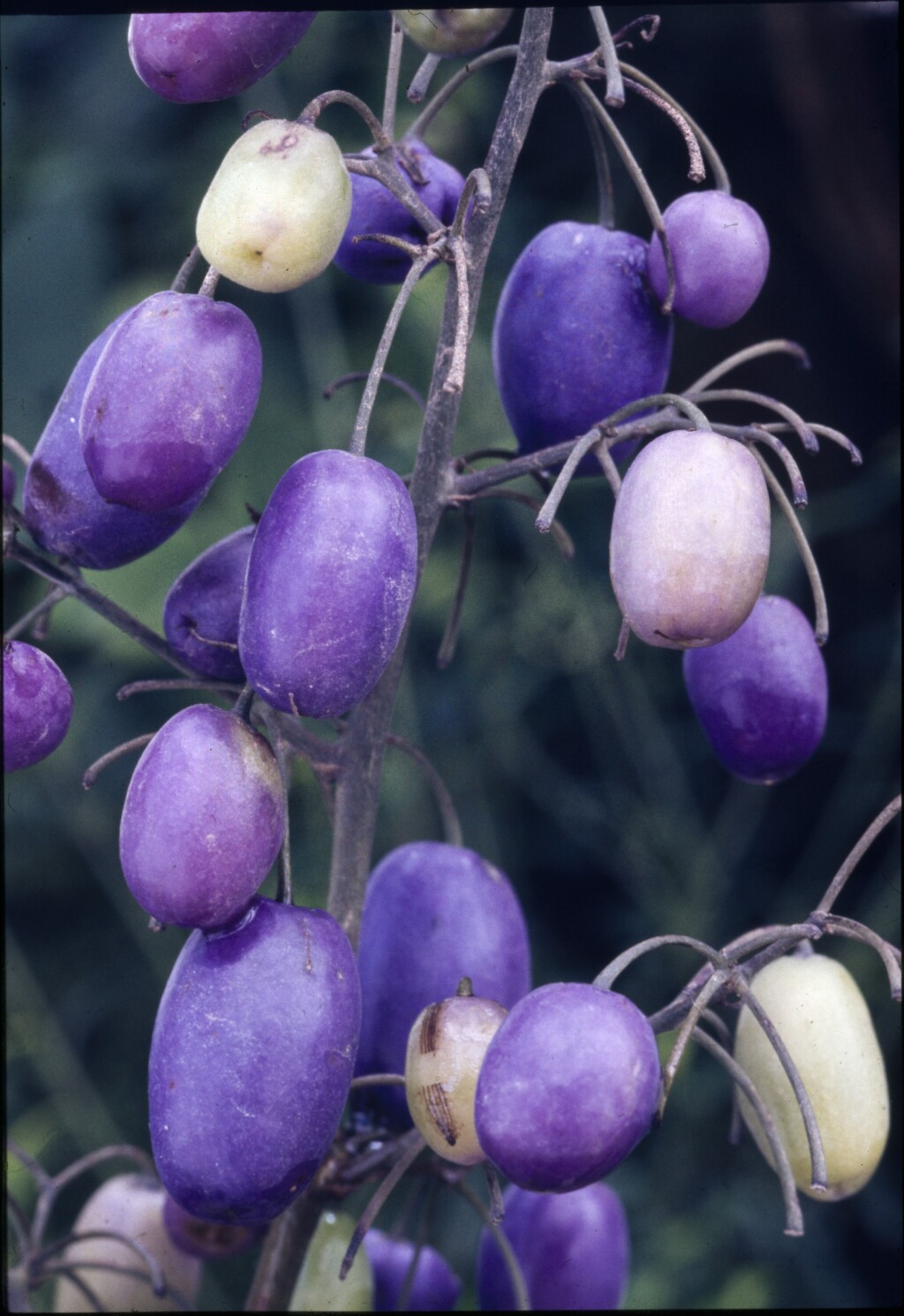Dianella tasmanica
Hook.f.Tufted plants to c. 1 m high, sometimes spreading extensively by rhizomes. Leaves mostly erect, sheathing at base, the sheath fully occluded below the blade; lamina flat or margins slightly recurved, 20–95 cm long, 1.5–3.5 cm wide, margins and abaxial midrib regularly and prominently serrate-scabrous. Inflorescence subequal to or exceeding foliage; panicle c. narrowly ovoid; pedicels 8–25 mm long. Flowers numerous, 12–19 mm wide, perianth segments 7–9 mm long, spreading to recurved, pale purple to deep metallic blue; stamens shorter than perianth segments, filaments c. 2 mm long, filament swellings (strumae) 2–3 mm long, deep yellow, subequal to or slightly longer than the pale yellow anthers. Berry ovoid to globular, 10–25 mm long, soft, purple and shining, when ripe; seeds 3–4 mm long. Flowers Oct.–Feb.
LoM, Wim, GleP, VVP, GipP, OtP, WaP, Gold, CVU, GGr, DunT, NIS, EGL, EGU, WPro, HSF, HNF, OtR, Strz, MonT, HFE, VAlp. Also NSW, Tas. A frequent component of moist, shaded, usually elevated forests throughout the State. Also common amongst rocks in some sheltered situations away from tall forest (e.g. Stony Rises area near Camperdown).
Conran, J.G. (1994). Liliaceae. In: Walsh, N.G.; Entwisle, T.J., Flora of Victoria Vol. 2, Ferns and Allied Plants, Conifers and Monocotyledons, pp. 637–686. Inkata Press, Melbourne.
 Spinning
Spinning